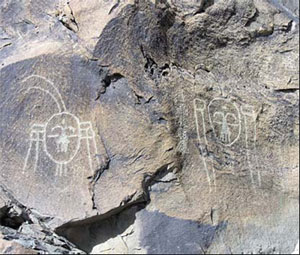Yinchuan's quiet majesty holds rich history
|
Aiyi River. Wang Meng |
Downtown Yinchuan offers all the amenities of a modern city. But once you drive west towards the Helan Mountains you are transported through a time tunnel in history - a notion reminiscent of many a Hollywood plot.
In fact there is a movie set about 35 km outside the city, a former military outpost called Zhenbei Fort. Along its south side are remnants of walls dating to 1500. Its northern section can be traced back to 1740.
But people don't go there to discover history, even though the region has 40-some forts from the Ming (1368-1644) or Qing (1644-1911) dynasties, several of which are in better conditions than Zhenbei.
The fort is visited today because of the experience and imagination of one man, a writer no less.
Zhang Xianliang was sent into exile to a remote farm in the Ningxia Hui autonomous region when he was young and stumbled upon the place.
After he was rehabilitated, he wrote many bestsellers, several of which were adapted into movies. He suggested the films use the Zhenbei Fort as a location.
Word spread that there was an authentic site that corresponded to what filmmakers had in mind for a yellow-earth plateau. The first hit that came out of Zhenbei was Zhang Yimou's debut film Red Sorghum.
In the early 1990s, Zhang Xianliang's writing turned the location into a hotspot for Chinese films. Dozens of filmmakers arrived, among them the crew of the Hong Kong spoof fantasy A Chinese Odyssey. Starring comedian Stephen Chow, the retelling of the Monkey King story evolved into a cult favorite.
Today tourists who marveled at the movie have a hard time believing that all its supernatural fight scenes were created in a place that looks like dusty outpost from 100 years ago.
In the past few years, Zhang Xianliang has further transformed it into a theme park that incorporates many settings from northwestern China.
The village, the bazaar or the landlord's courtyard all exude the atmosphere of 50 to 100 years ago. If you want to transport back 1,000 years, you'll have to drive south a dozen km and see what is left of the mausoleum of the Western Xia Kingdom.
The Western Xia existed between 1038 and 1227. A tribe of ethnic Qiang called Dangxiang or Tangut moved there from the Tibetan plateau.
After helping quell a peasant rebellion, the tribe was bestowed the surname Li by an emperor of the Tang Dynasty (618-907). The Dangxiang gained land and influence rapidly in what is now Ningxia and the provinces of Gansu and Shaanxi.
|
Rock art in the Helan Mountains. Ma Yi |
Li Yuanhao (1003-1048) is considered the founding father of the Western Xia. He declared independence from the Song dynasty (960-1279) and engaged in a tricky diplomatic and military manage-a-trois with the Song and the northern kingdom of Liao. He also created a unique language that had 6,000 characters, then had reams of Buddhist classics translated into it.
Nowadays you can make a tourist scratch his head by showing him some of these characters - he won't be able to decipher any of them.
The kingdom passed on through 10 generations, but was ultimately decimated by Genghis Khan. The entire capital city of Xingqing, now Yinchuan, was annihilated. The ethnic group Dangxiang no longer exists.
Except for canals, there are little traces of the kingdom in downtown Yinchuan. But at the mausoleum site, which spread 50 sq km and housed tombs for nine kings and 207 royal family members, there are still mounds of clay that locals call the "pyramids of the Orient".
Farther into the mountains you can revel in the archaeological paradise of rock art. Spread across the Helan Mountains are tens of thousands of ancient carvings in stone surfaces depicting human activities ranging from hunting and battles to dancing, religious rituals and sexual intercourse. Animals and symbols are also etched in stone. All can be traced back 3,000 to 10,000 years.
What all happened in these mountains? You can let your imagination run free.
(China Daily 07/02/2008 page24)
















